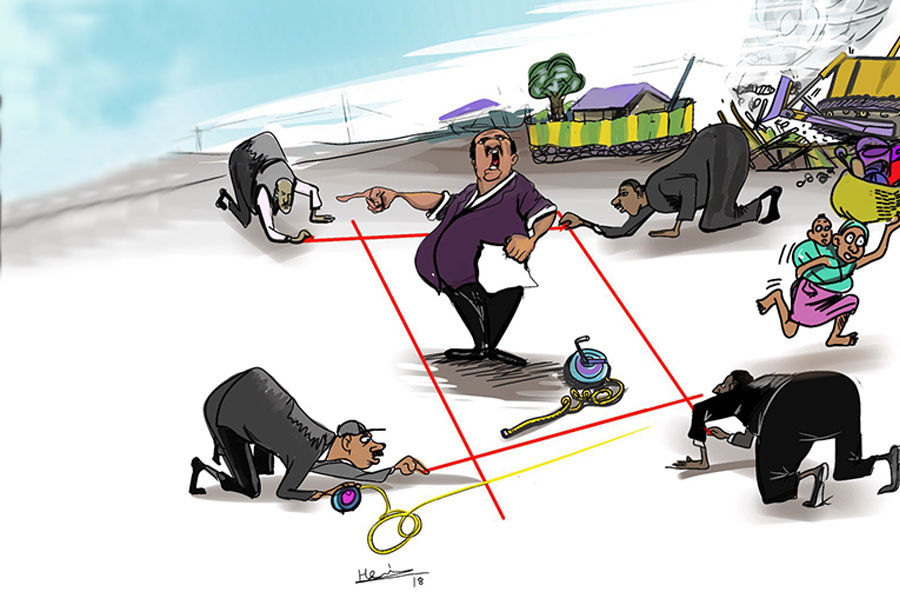
Aug 23 , 2025. By Asegid Getachew ( Asegid Getachew, Assistant professor , Department of Accounting and Finance. Head Quality Assurance and Enhancement, College of Business and Economics, Hawassa University Managing editor for African Journal of Economics and Business. He can be reached at asewoldeam@gmail.com. )
In Ethiopia, boardrooms, especially in family-owned firms and state-owned enterprises, tend to be tight-knit circles, often populated by insiders and long-serving affiliates. While such configurations offer speed and familiarity, they can come at the cost of strategic detachment and independent oversight.
That structure can deliver the rapid decisions needed in a fast-changing economy, but it limits the use of outside expertise. As the government establishes a capital-market authority and local businesses seek global capital, pressure is building to expand, diversify, and professionalise boards in line with international best practices.
Effective governance depends on matching numbers and talents to the company’s strategic needs while maintaining true independence and unwavering commitment. Whether the directors occupy five seats or 15, success ultimately rests on the quality of those individuals and their collective resolve to prioritise shareholders' interests. Undoubtedly, the size of a board of directors matters, but it should never be considered in isolation.
Take, for instance, Enron’s spectacular implosion at the start of the century. The Houston-based utility company put corporate governance squarely in the spotlight, reminding investors that strong guardrails are the best antidote to managerial self-interest. Enron’s spectacular collapse in the early 2000s demonstrated how even sophisticated firms can implode when directors abdicate their duty to challenge management, a risk that is all the more present in markets where independent oversight remains an afterthought.
The question that still sparks heated debate in boardrooms from New York to Addis Abeba is how many directors should occupy those seats.
Proponents of large boards argue that numbers equal breadth. More directors bring a wider range of professional backgrounds and life experiences, and that mix can lead to fresher ideas, livelier debate and sharper oversight. A larger group also offers wider external networks, which are valuable when a company needs to tap into expertise or open doors. Workloads can also be spread, so no single director is overwhelmed.
But size is no free lunch. As Harvard’s Martin Lipton and Jay Lorsch warned years ago, large groups invite “free-riding” and “social loafing,” fancy terms for directors who sit back and let others shoulder the task. Coordination costs rise. Discussions stretch. Factions form. By the time a consensus emerges, opportunities can be lost, and squabbles may leave lasting scars that linger long after the vote.
Fans of smaller boards see those drawbacks as proof that tight is right. Fewer chairs mean faster meetings, crisper decisions and a better chance that directors know one another well enough to hold frank exchanges without the theatre. Accountability is clearer. When something goes wrong, it is harder to hide behind anonymity. A nimble board, the argument goes, can grab openings before rivals even schedule a committee session.
That agility, though, comes at a price. A compact board may miss viewpoints that only a larger pool can supply. With fewer shoulders to carry the load, members risk being dragged deep into operational details, leaving less time for big-picture thinking or the networking that often adds real value.
Scholarship gives no single answer. Some researchers recommend no more than five seats; others are comfortable with a dozen. In practice, companies worldwide tend to cluster near the midpoint. A recent Spencer Stuart global survey found that average board size has held steady between nine and 11 directors, even as oversight duties have increased.
Still, directors and investors alike increasingly accept that head count alone does not determine quality. A board comprising the right expertise, independence, gender balance, and work ethic can outperform a larger rival that merely ticks the numbers box.
Nowhere is the trade-off between size and makeup more visible than in emerging markets. Many African corporations operate in settings where ownership is concentrated in families, the state or small investor blocs. In such firms, insider-dominated boards may move quickly, but independence can be thin. South Africa offers a contrasting model. Guided by the King IV Report, companies there tend to seat larger boards to ensure room for independent voices and to meet racial and gender goals set in the post-apartheid era.
Highly diversified or heavily leveraged companies often require broader advisory skills and therefore opt for bigger boards. Simpler firms may prize the speed a lean body provides. Academic Jeffrey and colleagues capture the nuance. More debt, more products and more geography all tilt the balance toward adding extra heads.
Context is king. Ethiopia’s companies should calibrate their board structures to reflect strategic realities, striking a balance between agility and independence, as well as speed and diversity. As the country edges toward a capital market era, governance will become more than a compliance issue. It will be a competitive advantage.
PUBLISHED ON
Aug 23,2025 [ VOL
26 , NO
1321]

Photo Gallery | 173771 Views | May 06,2019

Photo Gallery | 163997 Views | Apr 26,2019

Photo Gallery | 154048 Views | Oct 06,2021

My Opinion | 136573 Views | Aug 14,2021

Oct 11 , 2025
Ladislas Farago, a roving Associated Press (AP) correspondent, arrived in Ethiopia in...

Oct 4 , 2025
Eyob Tekalegn (PhD) had been in the Governor's chair for only weeks when, on Septembe...

Sep 27 , 2025
Four years into an experiment with “shock therapy” in education, the national moo...

Sep 20 , 2025
Getachew Reda's return to the national stage was always going to stir attention. Once...